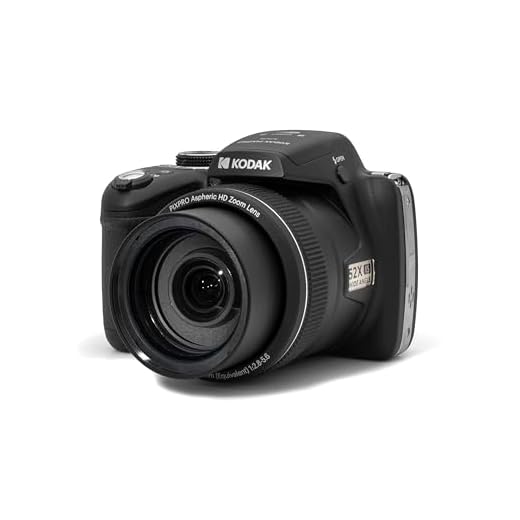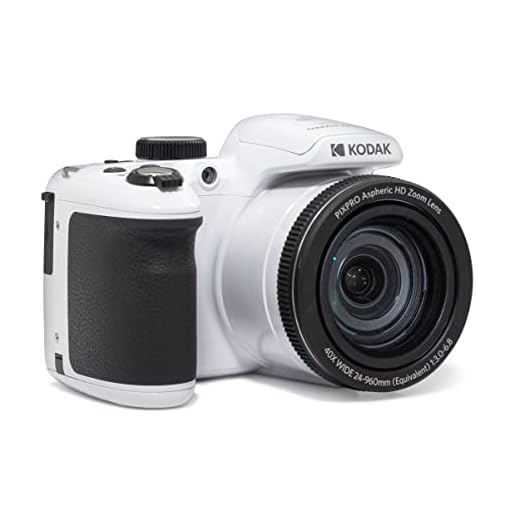




Small digital cameras with 65x zoom capabilities have revolutionized the way we capture images and videos. These compact devices allow photographers to zoom in on distant subjects with incredible detail, making them ideal for a wide range of shooting scenarios.
But how do these small cameras manage to achieve such high levels of zoom? The secret lies in their advanced optical technology and innovative design.
By utilizing a combination of high-quality lenses, image sensors, and powerful processors, small digital cameras can magnify distant subjects without sacrificing image quality. This advanced technology allows photographers to capture stunning close-up shots without the need for bulky equipment.
Understanding the Zoom Capability
Small digital cameras with high zoom capabilities achieve their impressive zoom levels through a combination of optical and digital zoom technologies.
Optical Zoom
Optical zoom refers to the physical movement of lens elements within the camera to magnify the image without any loss of image quality. The higher the optical zoom level, the closer you can get to a subject while maintaining sharpness and clarity.
Digital Zoom
Digital zoom, on the other hand, involves cropping and enlarging a portion of the image to simulate a zoom effect. While digital zoom can extend the reach of the lens, it can also result in a loss of image quality and detail, especially at higher zoom levels.
By combining both optical and digital zoom technologies, small digital cameras can achieve zoom levels as high as 65x, allowing users to capture distant subjects with remarkable clarity.
Exploring Digital Camera Technology
Modern digital cameras have evolved significantly over the years, incorporating advanced technologies to enhance the user experience and image quality. One of the key features that have improved dramatically is the zoom capability of digital cameras, allowing users to capture distant subjects with incredible detail.
Optical Zoom vs. Digital Zoom
There are two main types of zoom in digital cameras: optical zoom and digital zoom. Optical zoom utilizes the lens to magnify the image optically, resulting in higher image quality and better clarity. Digital zoom, on the other hand, enlarges the image digitally, which can lead to a loss of image quality, especially at high zoom levels.
Many modern digital cameras now come equipped with powerful optical zoom lenses, some of which can achieve up to 65x magnification. This impressive zoom range is made possible by advancements in lens design, image stabilization technology, and sensor resolution.
Factors Influencing Zoom Capability
Several factors contribute to the exceptional zoom capabilities of small digital cameras. These include:
| 1. Lens Design | High-quality lenses with multiple elements and advanced coatings can provide sharp and detailed images even at high zoom levels. |
| 2. Image Stabilization | Advanced image stabilization systems help reduce camera shake, allowing users to capture clear images even at long focal lengths. |
| 3. Sensor Resolution | Higher sensor resolutions enable digital cameras to capture more detail, enhancing the quality of zoomed-in images. |
By combining these technologies, small digital cameras can achieve remarkable zoom capabilities that were once only possible with large, bulky lenses. Whether you’re capturing wildlife, sports, or landscapes, the zoom range of modern digital cameras provides users with the flexibility to frame their shots precisely and creatively.
Key Features of Small Cameras
Small digital cameras with 65x zoom capabilities offer a range of features that make them stand out in the market. Here are some key features that contribute to their impressive zoom capabilities:
1. Optical Zoom
Small cameras use advanced optical zoom technology that allows them to magnify distant subjects without compromising image quality. Optical zoom works by physically adjusting the lens to bring the subject closer, resulting in sharp and detailed images even at high zoom levels.
2. Image Stabilization
To ensure clear and steady shots at extreme zoom levels, small cameras are equipped with image stabilization technology. This feature helps reduce the effects of camera shake, allowing users to capture sharp images even in low-light conditions or when shooting moving subjects.
| 3. High-resolution Sensors | Small cameras come with high-resolution sensors that capture detailed images with minimal noise, even at high zoom levels. The quality of the sensor plays a crucial role in maintaining image clarity and sharpness, especially when zooming in on distant subjects. |
Optical vs. Digital Zoom
When it comes to zoom capabilities in digital cameras, there are two main types: optical zoom and digital zoom. Understanding the difference between the two can help you make an informed decision when choosing a camera.
Optical Zoom
Optical zoom is a true zoom feature that uses the camera’s lens to bring the subject closer. It provides a higher quality image because it physically magnifies the image before it is captured. Optical zoom is ideal for capturing distant subjects without losing image quality.
Digital Zoom
Digital zoom, on the other hand, is a software-based zoom that enlarges the center portion of the image. While digital zoom can increase the apparent size of the subject, it does so by cropping and enlarging the image, which can result in a loss of image quality and detail. Digital zoom is often used as a marketing feature to advertise high zoom capabilities, but optical zoom is generally preferred for better image quality.
| Optical Zoom | Digital Zoom |
|---|---|
| Physically magnifies the image | Enlarges image through software |
| Preserves image quality | Can result in loss of image quality |
| Ideal for distant subjects | Used for marketing purposes |
Differentiating Zoom Types
When it comes to digital cameras, there are different types of zoom that can be used to capture distant subjects:
- Optical Zoom: This type of zoom uses the lens to magnify the image optically without compromising image quality.
- Digital Zoom: Digital zoom enlarges the pixels in the image, resulting in a loss of image quality as it simply crops the existing image.
- Hybrid Zoom: Hybrid zoom combines optical and digital zoom to provide a higher zoom range without sacrificing too much image quality.
Small digital cameras with high zoom capabilities often use a combination of optical and digital zoom to achieve the desired magnification without compromising image quality.
Implications of Zoom Features
Having a high zoom capability in a small digital camera opens up a world of possibilities for photographers. Here are some implications of having a 65x zoom feature:
- Versatility: With such a powerful zoom, photographers can capture a wide range of subjects, from landscapes to wildlife, without having to switch lenses or carry bulky equipment.
- Creative Freedom: The ability to zoom in on distant subjects allows photographers to experiment with different perspectives and compositions, resulting in unique and compelling images.
- Convenience: Small digital cameras with high zoom capabilities are portable and easy to carry, making them ideal for travel photography or everyday use.
- Detail and Clarity: The 65x zoom feature enables photographers to capture fine details and textures in their images, enhancing the overall quality of the photos.
- Exploration: Photographers can explore new shooting opportunities and push the boundaries of their creativity with the flexibility that a high zoom camera provides.
Advancements in Lens Technology
One of the key factors enabling small digital cameras to achieve 65x zoom is the continuous advancement in lens technology. Manufacturers have been able to develop compact lenses that are capable of capturing distant subjects with incredible clarity and detail.
These advancements include the use of high-quality glass materials, precision engineering, and innovative optical designs. Additionally, the integration of image stabilization technology helps reduce camera shake and maintain sharpness at extreme zoom levels.
Enhancing Zoom Range
Small digital cameras are able to achieve impressive zoom ranges, such as 65x, through a combination of advanced optical technology and digital enhancements. One key factor is the use of high-quality lenses with powerful zoom capabilities. These lenses are designed to magnify the image without sacrificing image quality.
Additionally, digital cameras use advanced image processing algorithms to further enhance the zoom range. Through techniques such as digital zoom and image interpolation, cameras can extend their optical zoom capabilities to achieve even higher magnification levels while minimizing image degradation.
FAQ
How do small digital cameras achieve such high zoom levels?
Small digital cameras with 65x zoom achieve this through advanced optical technology such as high-quality lenses with multiple elements and coatings, as well as sophisticated image processing algorithms that enhance the digital zoom capabilities.
What are the key components that enable small cameras to have 65x zoom?
The key components that enable small cameras to have 65x zoom include powerful zoom lenses with a wide focal length range, high-resolution image sensors, and advanced image stabilization systems to compensate for hand movements at high magnifications.
How do small digital cameras compare to larger cameras with regards to zoom capabilities?
Small digital cameras with 65x zoom can offer comparable zoom capabilities to larger cameras due to advancements in lens technology and image processing, allowing them to achieve high magnification levels in a compact form factor.
Are there any limitations to the zoom capabilities of small digital cameras?
While small digital cameras with 65x zoom offer impressive magnification, they may have limitations in low-light performance, image quality at maximum zoom, and overall size compared to larger cameras with even higher zoom ranges.
What are some benefits of using small digital cameras with 65x zoom?
Some benefits of using small digital cameras with 65x zoom include portability, versatility in capturing distant subjects, and the convenience of having a high zoom range in a compact camera that can easily fit in a pocket or bag.






